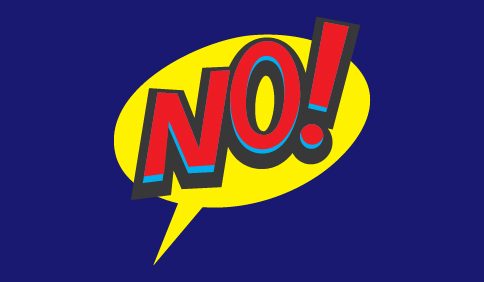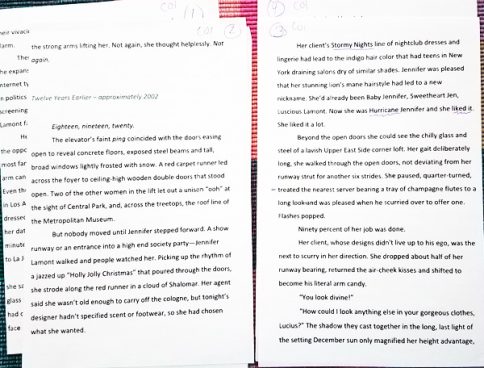CONTENTS
Once I got that laugh I was hooked on the feedback loop in public readings. I enjoy readings immensely. But it took practice and learning from a lot of mistakes to get there. All in all, it’s no surprise to me that one of the most common requests for advice from new authors is how to survive that first reading. In 2020 it got even more complex because we had to manage cameras, lights, and microphones, as well as working with tech or someone running the tech. It was that, or have no opportunities at all to appear for readers.
My Fingers are Crossed You Find This Useful
I’ve attempted here to create a useful checklist of advance work that will take a lot of anxiety out of the process. Plus tips for managing the event itself gleaned over many years in a changing landscape of opportunities for live readings. Your experience will be different!
Hidden bonus: Reading my work aloud has also proven an invaluable editing and feedback tool. I hear clunky phrases, wrong words, repetitive structure, and awkward sentences when my eye thinks they’re fine. Once, before publication thank goodness, I even discovered a paragraph was one long sentence, all 143 words of it. I had also used actually, really, and just multiple times each. My ear heard them; my eye didn’t see them.
It’s Okay Not to Do Readings and Fan Events
This most of all! I hereby give any author permission not to do live readings. If public speaking and social-marketing interaction terrify you, don’t do it. You’re a writer – you don’t also have to be a performer.
Play to your wheelhouse. If that’s staying home and writing more, you are winning, big time.
Scout the Landscape
If you can, attend a similar event before yours is scheduled to occur. Or search for videos from previous readings at that conference or library event. Watch how someone else does it and ask yourself what did and didn’t work. In the way back when time, I went to several events at different women’s bookstores just to learn the boundaries. It helped me watch a range of styles and suss what was appropriate in different settings. And it gave me a chance to think about my own skills and what I could or couldn’t do in a reading.

Pick the Right Passage to Read
Choose something that’s within your confidence and competence level.
- For example, the worst thing of my own I ever read aloud was a very funny scene (usually a good thing) that had 5-6 different speakers. Personal reality check – I don’t have a knack for different voices. The humor got lost in the audience trying to follow who was talking. Now I stick to two voices max. I do have good comedic timing so I tend to pick something with at least one good punchline. Play to your strengths.
Pick a scene that’s earlier in the book.
- There is less need to give the audience backstory, which is almost always dull and time-wasting. It is perfectly okay to end on a cliffhanger or simply because it’s a lovely sentence, or a good punchline.
Don’t read the big dramatic scene in the story!
- You’ll spoil all the tension for the reader who was intending to buy it and it will probably fall flat anyway. That scene succeeds in the book because of all the work you did to bring the reader to that moment. A live audience won’t be ready to go with you down that road without a lot more time and work.
Write out an explicit set up for the passage, practice it, and spend no more than 30 seconds saying it.
- Do not ad lib the set up. You’ll think it took 30 seconds and it really took 2 minutes. If it takes longer than 30 seconds to set up the audience for the passage, pick a different passage. Let your book, and not your introduction, take center stage.
Passage Set Up examples:
I’m going to read from my latest novel. It’s romantic intrigue set in a small town near a huge wildlife preserve. The main character, Sue, makes a frightening discovery.I’m going to read from NameofBook. Nancy is fleeing a party where she spilled wine on the only woman she’d been interested in. Her evening isn’t going to get better.
Adapt the Printed Word to Reading Aloud
It’s not a rule that what you read is exactly what’s in the book.
- If a great passage has something right in the middle that will confuse your audience, like a reference to an event they know nothing about, edit it out for your reading. They won’t remember later that you did so.
- Also, add more tags for the dialogue. Swap out “she” with names when it’s not clear.
The audience can’t hear a paragraph break.
- Over the years, I’ve had very few people follow along in the book while I read. So it’s good to remember they can’t hear what only a reader can see, such as a blank space meant to indicate passage of time. A transition phrase (e.g. “A few hours later…”) might really help.
- PRO TIP: Transition phrasing is also true when your book becomes an audio recording! Think about permanently changing a few things in your prose to make your stories automatically easier to listen to. What our eyes glide over the page can be an annoyance to our ears. (For example, eliminating “said” as much as possible in favor of action. Good examples here.)
Be aware of the surroundings for explicit content.
- If you’re reading in the afternoon at a general interest bookstore it’s probably best to ramp back the F-word and the sex with toy scenes because of the possibility of kids nearby; don’t cause trouble for your bookseller if you can avoid it. If it’s the LGBT center erotica night, ooo baby, let it all hang out.
Make What You Read FROM Physically Friendly to You
- You’ll have a copy of the book to show the audience, but you don’t have to read from the book itself. I copy out the passage I’m intending to read into a new document and edit it for reading aloud. When I print it I use a type size that’s comfortable for me to see.
- Over the years I developed a special format for the print out. It looks like this.

I print it landscape in two columns, each about 3.5 inches wide, and fold each sheet in half. The distance from one side of the column to the other is less likely to cause me to lose my place, which happened if I printed a column 7-inches wide. - If there’s a lectern, I turn each sheet like pages of a book. In the middle of reading the pages are arranged like this in front of me.
- If there isn’t a podium or lectern, I can easily hold all the sheets in one hand leaving my other hand free for gesturing or turning over the sheets. It’s nowhere as heavy or awkward as holding a book one-handed, or trying to get a book to stay open on a podium. One last thing, if the pages aren’t numbered during printing, I number them by hand. Never making that mistake again!
- Also, put in visual breaks for yourself to mark a dramatic pause or simply where you need to breathe. Change out words that turn out to be tongue twisters. etc. If appropriate to the venue, swap out the adult words for PG ones.
- For video conferencing I don’t print out the pages because my large monitor lets me put the document and the video feed close enough together that I’m still looking toward the camera. If I don’t have the large monitor I still print out the pages. I’ve even taped them like cue cards behind the camera. However you do it, practice.
Use. The. Microphone.
While We’re On the subject of lecterns and room setups, if there’s a microphone USE IT. I say more about that in Surviving that First Panel. Short answer: Discomfort with the technology is not an excuse for not using tech that makes it easier for the audience to hear you. You can ask “Can everyone hear me, okay, let’s skip the microphone,” all you want, but do you really want to lose the reader with hearing issues who is so very tired of having to say so? Longer answers at the other blog. Okay, one more short answer: If you’re not trained to project your voice, you’ll forget and/or get tired. The microphone is also for you.
Practice Like the Pro the Audience Already Thinks You Are
Practice, practice, practice.
- Record yourself with camera and microphone, and managing your text documents, at least once. Watch it all the way through, painful as it may be. I still haven’t conquered my squirrel voice tendencies, but I am aware of them and do try to lower my timbre by pausing for a good breath now and again.
- There will be vastly more opportunities to read and appear online, so investment in decent equipment is worth it. Your phone or laptop may already have great equipment; learn how to use it with ease. A tripod or stand to hold your phone at the right height might make life easier too.
Time yourself. This is vital.
- First of all, running long can be disastrous for you – See next section. But also, different kinds of passages read at different speeds. My readings run anywhere from 200 words per minute for comic and light to 100 words per minute for something where dramatic pauses and a slower pace are necessary to help the audience follow along. That’s quite a range!

Mind the Clock and Follow Instructions
- If you’ve been told to read for eight minutes, then read for eight minutes or less. This is particularly important in group readings. Don’t go over. Readers might not remember that you’re the one who blew the timing of the event so that last person lost several of her minutes, but believe me, that author will never forget it was you. It could be why you’re not asked to play reindeer games down the road.
- Readers can notice when someone is out of sync. For example, at one event we’d all been warned multiple times that the space we were in had to be vacated on time. It was repeated to us all at the beginning of the readings. There were at least sixteen authors on the roster for a two-hour spot. We were told 5 minutes and no more.
If the author knew when to show up and what order they were to be in, then they knew they had 5 minutes, including all introductions. This particular author took 17 minutes and 42 seconds, and I wasn’t the only one keeping track.
Even worse, the last person on the roster – one of the big names, which was why they were batting clean-up – didn’t get to go at all. All around me in the audience the readers were grumbling, and they knew exactly who’d hogged far more than their share.
Even more worse, that meant there was less time to mingle with readers, and sign books when we’d moved to the reception area. Lasting consequence? The group had trouble booking that venue the following year because they’d vacated the space late. Do you think they forgot who was responsible?
Be Comfortable and Power Up
Do some self care before the event. Whatever you do to calm yourself, and to feel physically awake and strong, allow time and space for it. For example, I avoid a big meal before a reading. I arrive in the area early so I can walk off any fluster the commute may have caused. I wear clothes that make me feel competent, and that I won’t be distracted or restrained by while I’m meeting people and standing in front of a group.
If the reading is via video conferencing, I set up camera and room 30 minutes early, then check lighting and sound with a quick video. Time of day affects your energy level as well as the ambient light available. It reduces my anxiety to know it’s all ready to go and I’m “up” for it. As someone who wears glasses, lighting is vexing, and it takes fussing every single time.
Even a reading of five minutes on Zoom takes energy and lots of good breathing. Whatever will maximize those things for you – wear that, do that, allow for that.
Introduce Yourself
Not all events and venues are the same. Sometimes there’s a moderator/host who’ll take care of introductions. But sometimes there isn’t. Be prepared to quickly introduce yourself. By quickly, I mean 30 seconds or less. Try for less. This is called “the elevator speech.” Write it out, practice it, and you’ll be able to say it in any setting, not just at a reading.
Elevator Speech example: (Adapt tone as needed from a conversational answer to “what do you do?” to a self-introduction in a formal setting.)
“My name is Karin Kallmaker and I write novels and short stories. My specialty is romance and adventure for and about lesbians. I love writing for the sapphic fiction market. The readers are fabulous. My next book comes out in June.” (More formal, about 15 seconds.)
“I write romance novels about lesbian and queer women. The women are the heroes of every story, and always save themselves. (In answer to “what do you do”, about 8 seconds)
Prepare for the Q&A
Not all reading events include a chat, or post-reading interaction with the audience. Even so, readers will always ask questions, one-on-one, or in front of everybody. Most of the questions fall into general categories. You’ll be 95% prepared for anything if you think of one or two things you’d say to each of these:
- How do you do research
- What’s your writing schedule, do you write every day
- Do you outline or do it seat-of-your-pants
- Where did you get this idea
- What are you working on now
Managing an audience can be tricky.
- If one person wants to chat extensively, and you have other people looking eager to ask their own question, ask the chatty person if they’d like to talk once the formal part of the event is over. Don’t let one person hog the time. However, if only one person wants to ask questions, thank your lucky stars at least one person is willing, but make eye contact with other people when you answer. After a couple of minutes with just one person, encourage others to ask.
Ask Yourself a Question
- Sometimes, no one wants to go first. So be prepared to ask yourself a question to get the ball rolling. Sometimes the audience does want the answers, but they don’t want to be the one to ask. So it’s okay to break the ice with, “One question that nearly always comes up is…” (I suggest #4 above as a natural self-question.) If after you’ve asked and answered one question no one wants to follow-up, it’s time to wrap up.
Redirect Out of Bounds Questions
- The awkward overly personal question? “What’s in the book – is that how you like sex?” Yes, I’ve been asked that and other questions I felt were off-limits. My most successful response is, “What answer will get you to buy the book?” The audience will laugh, giving you the room back. Look elsewhere and ask, “Anyone else have a question?”
Don’t Overstay Your Welcome
Watch Your Host and Audience
- Use a timer on your phone or set out a watch where you can check it so you know how long you’ve been in the spotlight after the reading is over. When the audience starts shifting around in their seats, or your host edges closer to you, it’s time to wrap up. You don’t want to eat into the time they need to do something, like, say, buy your book.
For video conferencing, timing is usually set out clearly in advance and the moderator will cut in when you need to end, but don’t count on that. Keep track of your time yourself. It’s okay to ask, “This question might take a few minutes to answer. Is there time?”

Don’t be Thrown by a Small Turnout
- This has happened to everyone. EVERYONE. Here’s the key: Don’t take it personally. Be gracious to anyone who turns up. Be grateful for their time. Thank your host. Vent to a friend later. Don’t gripe on social media! Later, evaluate publicity and look for improvements you might reasonably make. Otherwise, chalk it up to experience.
Request an Action to Close
Last but not least, you took the time to prepare and get to the event. Finish with the whole point of the event: Ask for an action. Practice a simple closing thank you,
Closing Thank You examples:
I hope you enjoyed that – I certainly did! I have a free excerpt on my web site, me.com. Check that out if you’re curious about more.That’s my whole spiel. Thank you for listening. My book is in the vendor room at the XYZ table, and I’ll be there to sign them in a few minutes. I hope to see you there!
Pro Tip: If you send people to your site to read an excerpt, don’t forget to put buy link(s) at the beginning and end of it.
Bookstore Etiquette 1: Pimp the Store
If you’re fortunate enough to be at a real bookstore, don’t be shy! Introduce yourself at the register, let the staff show off the space. Check out where your book can be found for purchase so you can point people there. While you are grateful for the venue, you’re also seeing how well the bookstore did on their side of the bargain (did they in fact order in a supply of your books? did they put up a flyer to promote your appearance?) so you can decide about doing it again. (Many of these steps are the same if you’re being hosted by a library.)
If the bookstore event is virtual, ask ahead of time if there’s something at the store they would like you to mention.
During your reading pimp the store. (If it’s a library, pimp the library.) Talk about their donate-a-book program or another upcoming event. If love of bookstores and libraries isn’t enough to motivate you, enlightened self-interest: You want it there for your next book.
Bookstore Wrap-Up examples:
It’s great to have this store and I hope you’ll buy my book here — or any book for that matter. It’s the best way to say thank you and support this space.This event was free, but how about we make it a one-book minimum before you go? Any book will do.
I happily sign books people bring from home. I know they’ve been collecting them for years. But I always nudge them hard to buy something to compensate the bookstore for hooking us up. If they have a stack and there’s a line behind them, I ask them to wait until the end.

Bookstore Etiquette 2: Don’t Be a Jerk
Don’t be a monumental jerk and tell people or hand out a flyer or business card that promotes buying your books at a competitor (like Amazon) or at a website, even if it’s your own or your publisher’s. (Yes, you can give your website address, just don’t mention it as a place to actually buy your book.) Not only is it tacky and ungrateful, the couple of books you might sell will not make up for not being welcome at the store in the future.
If someone asks about another book of yours and how to get it, the only right answer is to say the bookstore can order it for them. If that’s not the case let the store tell them. If the reader wants an ebook instead of print, again, refer them to the store – that’s a great question to ask the staff before the event.
While you are a guest in a store, the only place in the world books can be bought is at that store.
Trust me, 100% of your readers know how to find your book online. You don’t need to tell them how while standing in a bookstore. This helpful blog gives useful background about how bookstores decide on events and consignments.
Relax – It Will be Okay
Work through and plan ahead for the various aspects of the event and you’ll do just fine, even if you get the flop sweats. On that topic, have a tissue handy, bring your own bottle of water because not every venue will provide one, and whatever you do, breathe.
Breathe.
It’ll be okay.
© 2021, 2019, 2017, 2012 Karin Kallmaker
First publication 2012-08-29


